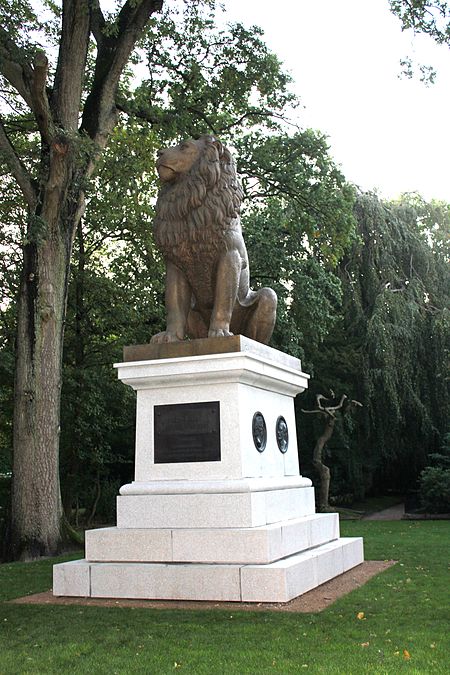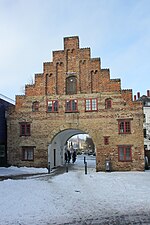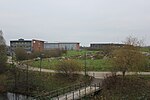Isted Lion

The Isted Lion (or Flensburg Lion) (Danish: Istedløven or Flensborgløven), German: Flensburger Löwe or Idstedter Löwe) is a Danish war monument originally intended as a monument of the Danish victory over German-minded Schleswig-Holstein insurgents in the Battle of Isted (Idstedt) on 25 July 1850, during the First Schleswig War which was a civil war within the Danish Realm, although with troops from Prussia supporting the Schleswig-Holstein insurgents. At its time it was the largest battle in Scandinavian history. Others perceived it more as a memorial for the Danish dead in the battle.Originally erected in Flensburg, Schleswig during still Danish rule, it was moved to Berlin by Prussian authorities after Prussian conquests in the Second Schleswig War of 1864 and remained there until 1945. It was returned to Denmark as a gift from the United States Army and was located at Søren Kierkegaards Plads in Copenhagen. In September 2011 it was returned to Flensburg.
Excerpt from the Wikipedia article Isted Lion (License: CC BY-SA 3.0, Authors, Images).Isted Lion
Kanonenberg,
Geographical coordinates (GPS) Address External links Nearby Places Show on map
Geographical coordinates (GPS)
| Latitude | Longitude |
|---|---|
| N 54.78526 ° | E 9.4297388888889 ° |
Address
Idstedt-Löwe (Flensburger Löwe)
Kanonenberg
24937 , Westliche Höhe
Schleswig-Holstein, Germany
Open on Google Maps









